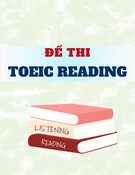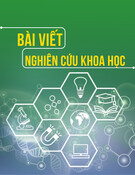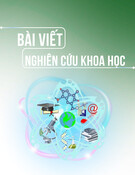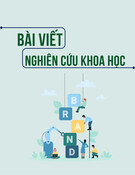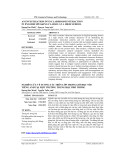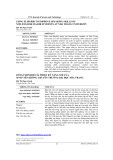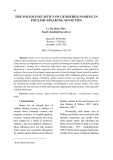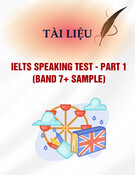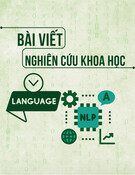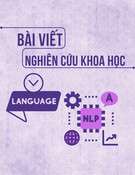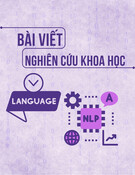
87
THE EFFECTS OF SELF-QUESTIONING AND PERCEPTIONS ON
LEARNING READING COMPREHENSION OF THE EFL STUDENTS
AT A UNIVERSITY LEVEL
Thi Ngoc Minh Thuy; Thach Son Le; Nguyen Thi Phuong Nam
Tra Vinh University
tsle@tvu.edu.vn
(Received: 14/09/2023; Revised: 18/11/2023; Accepted: 01/12/2023)
Abstract: This study aimed to determine the effects of self-questioning on pre-intermediate EFL
students’ reading comprehension and explore their perceptions of learning to read with self-
questioning. A quasi-experimental design was carried out among two groups of sixty-eight
Vietnamese pre-intermediate students over a nine-week reading course using self-questioning and
teacher-posed questions. The research instruments used were pre-and-post tests for reading
comprehension, writing, and a questionnaire consisting of 28 items. The results of the study
showed that self-questioning had a positive effect on reading comprehension. Data from the pre-
test and post-test indicated that there were significant differences between the self-questioning
group and the teacher-posed questions group in reading comprehension, especially local
comprehension and writing related to the reading passage. The data from the questionnaires also
revealed that the students had a positive perception of learning with self-questioning. The study
suggested that self-questioning should be employed to improve the reading comprehension of pre-
intermediate EFL students.
Keywords: Self-questioning, reading comprehension, positive perception, pre-intermediate, EFL
students
1. Introduction
Reading is the most crucial medium for knowledge acquisition at all educational levels
(Freire, 1983). Learners acquire language when they are exposed to the language and receive
comprehensive input (Krashen & Terrell, 1983). Elley and Mangubhai (1983) suggested that through
reading learners increase their exposure to language input. In the context of teaching to read in a
university in the Mekong Delta, the current teaching methodology has the tendency to focus on one
component of true or false knowledge of the texts (Nguyen, 2022). This methodology is embedded in
the common situation of teaching reading in EFL contexts that are still around accuracy-based and
passive reading (Correia, 2006).
In the two recent reviews of research concerning reading engagement, the use of self-
questioning was reported by Daniel and Williams (2021) and Joseph et al. (2016) as yielding deeper
reading of texts. In particular, when students receive sufficient instruction on how to construct their
own questions, their use of self-questioning during or after reading typically results in enhanced
understanding. Especially, several quasi-experimental studies have proven the effects of self-
questioning on reading comprehension (Berkeley, et al., 2011; Khansir & Dashti, 2014; Nguyen et al.,
2016). However, self-questioning facilitating students’ reading comprehension remains scarce in the
pre-intermediate level of English proficiency.
There are a few factors that lead to the design of the present study, including the gaps in
previous relevant studies. First, researchers have investigated the effects of self-questioning on
different angles of learners’ reading comprehension. In particular, self-questioning helps students
improve their literal comprehension (Berkeley, et al., 2011; Khansir & Dashti, 2014), reorganization
(Singer & Donlan, 1982), inferential comprehension (Taylor, Alber, and Walker, 2002) and reading
engagement (Nguyen et al., 2016). However, the dependent variable of previous studies mainly
focuses on reading comprehension at textual level. As a result, the current study will focus on the
students’ reading comprehension at response level. Second, the participants of these studies are
school-aging learners (Berkeley, et al., 2011; Davey and McBride, 1986, King, 1991; Khansir &





